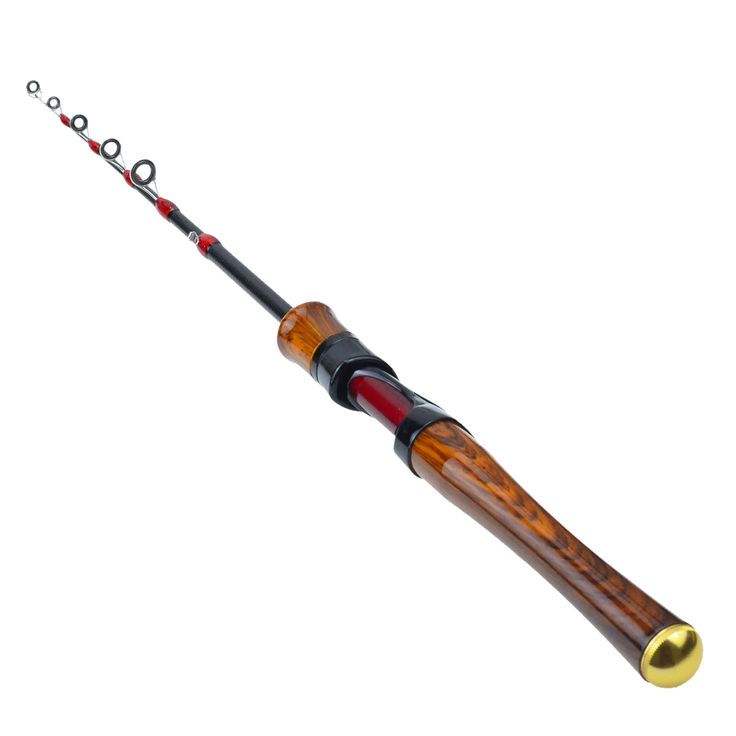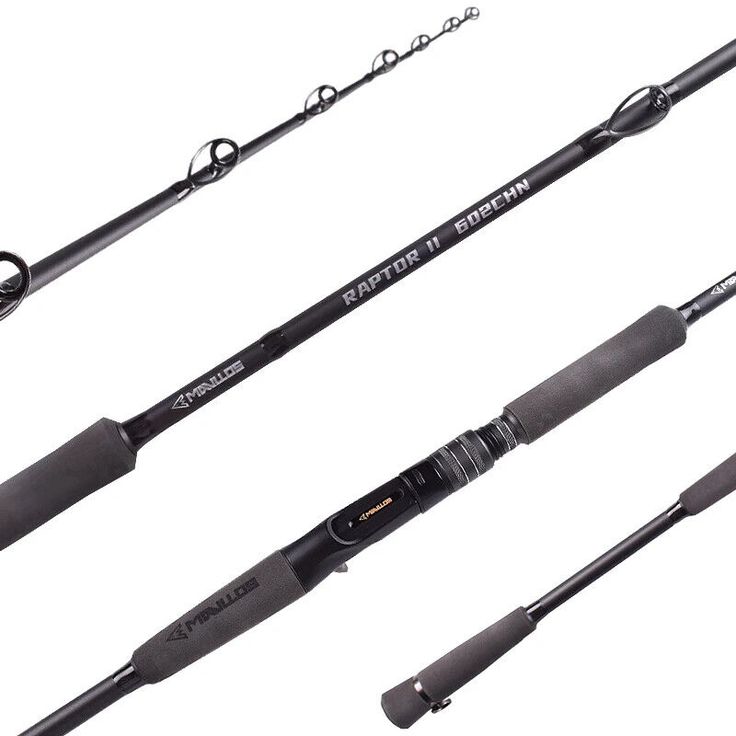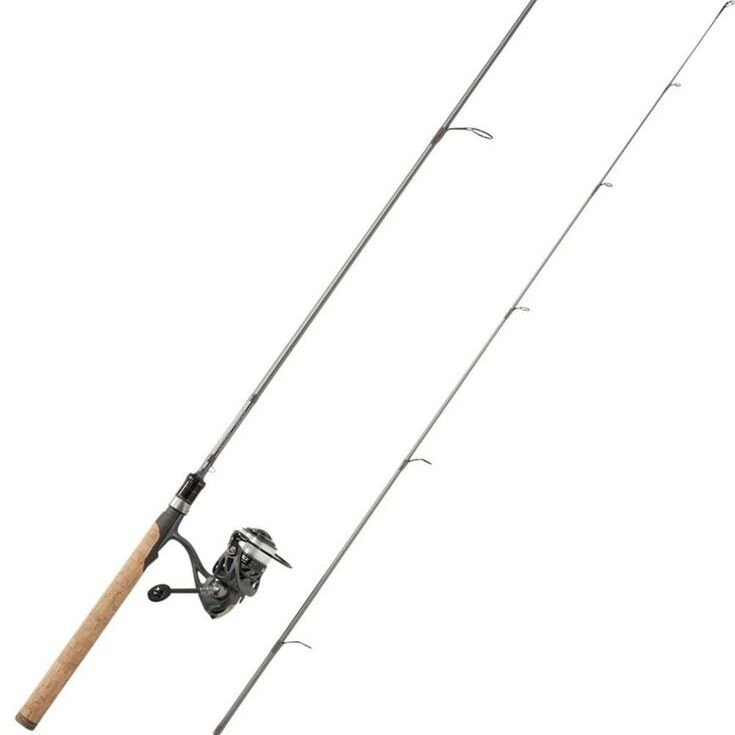Introduction to Fishing Rod Knots
Whether you’re a novice angler or a seasoned pro, understanding how to tie a fishing rod knot is crucial. It’s the critical link between you and the fish. A well-tied knot can mean the difference between a great catch and lost tackle. This guide will cover the basics and importance of fishing knots.
Knots serve many purposes in fishing. They connect hooks to lines, join lines together, and attach lures. Each knot has its strengths and specific situations where it excels. Mastering several types of knots enhances your fishing experience.
Before diving into specific knots, let’s highlight their importance. A good knot must be strong to withstand the fight of a fish. It should be reliable so that it doesn’t come undone under tension. Additionally, it needs to be simple enough to tie quickly and efficiently in various conditions.
When learning how to tie a fishing rod, patience and practice are key. With the knots you’ll learn in the coming sections, you’ll be well on your way to making sure that every tie is a step towards a successful fishing trip.

Essential Knots for Fishing Enthusiasts
As we delve into tying fishing rod knots, there are essential knots that every angler should master. These knots form the foundation of a reliable tackle setup and increase your chances of a successful catch. Here, we introduce three knots that are praised for their strength and versatility: The Improved Clinch Knot, The Palomar Knot, and The Uni Knot.
The Improved Clinch Knot
The Improved Clinch Knot is a staple for many anglers. Ideal for attaching your hook, swivel, or lure to the line, this knot is known for its strength and simplicity. To tie this knot, thread the line through the hook eye and double back, creating a coil of five to seven turns. Then pass the tag end through the small loop near the eye of the hook and subsequently through the large loop you formed. Wet the line, pull to tighten, and trim any excess.
The Palomar Knot
The Palomar Knot is another must-know for fishing enthusiasts due to its durability and ease of tying. Perfect for securing hooks, this knot works well with braided lines which are prone to slipping with other types of knots. Simply double your line to create a loop, pass it through the hook’s eye, tie a simple overhand knot, and then pull the loop over the hook. Tighten by pulling both the standing line and tag end after wetting the knot.
The Uni Knot
The Uni Knot, versatile and strong, is suitable for various connecting tasks. It’s effective for attaching the line to the hook, lure, or swivel, and even for joining lines. Start by passing the line through the hook eye and forming a loop by laying the tag end parallel to the standing line. Wrap the tag end around both lines five to six times, moisten, and then pull the tag end to tighten the coils. Slide the knot towards the hook eye and secure it by pulling the main line.
Step-by-Step Guide to Tying a Fishing Rod Knot
To excel in fishing, it’s important to master the process of tying knots. Let’s walk through the steps of tying a fundamental fishing rod knot. Remember, each step is key to ensuring the strength and reliability of your line.
- Select Your Knot: Based on your fishing conditions, choose a knot that best fits your needs. The Improved Clinch Knot, The Palomar Knot, and The Uni Knot are great starting points.
- Cut a Clean Line: Always start with a clean cut. Frayed ends can make knot tying more difficult.
- Thread the Line: For most knots, you’ll begin by threading the line through the hook’s eye or the swivel. Be sure to leave enough length for wrapping.
- Wrap the Line: Depending on the knot, wrap the line around itself several times. This is where precision is crucial. Wraps should be neat and not overlap randomly.
- Tightening: After wrapping, pass the end of the line through the loop that’s been formed. Wet the line slightly to reduce friction. Then, pull the line to tighten the knot snugly against the hook or swivel.
- Trim Excess Tag: Once the knot is secure, trim the excess tag end. Leave a short length to prevent the knot from unraveling, but not so long that it becomes cumbersome.
By following these steps and practicing consistently, you will become proficient at tying a variety of fishing rod knots. The skill of knot-tying is as vital as any other aspect of fishing, and with practice, it will become second nature.

Tips for Tying Strong and Reliable Knots
To ensure your fishing excursions are fruitful, mastering the art of knot tying is essential. Here are some tips to help you tie knots that are both strong and reliable:
- Use the Right Knot for the Job: Different situations call for different knots. Make sure you select a knot that matches your fishing needs.
- Maintain Tension: As you tie your knot, keep tension on the line. This helps in forming tight and secure knots.
- Keep the Line Wet: Before final tightening, moisten the line to reduce friction. This allows for a tighter knot without damaging the line.
- Practice Regularly: Like any skill, the more you practice, the better you become. Take time to practice your knot-tying even when you’re not fishing.
- Inspect Your Knots: After tying a knot, inspect it to ensure there are no weak spots or slippage. A quick tug can confirm it’s done right.
- Avoid Hurried Knots: Never rush your knot tying. Hasty knots are more likely to fail. Take your time to tie each knot properly.
- Learn to Trim Properly: After securing your knot, trim the excess line but leave a small bit. This prevents the knot from unraveling without getting in the way.
Following these tips and incorporating them into your fishing routine will boost your confidence and efficiency in tying reliable knots. Remember, the knot is the critical connection point in your fishing setup, so giving it the attention it deserves will pay dividends in your angling success.
Common Mistakes to Avoid When Tying Fishing Knots
While learning how to tie a fishing rod properly, avoiding certain pitfalls is crucial. These common mistakes can weaken your line, cause knots to slip, or lead to the loss of a fish. Awareness and avoidance of these errors can make a significant difference in your fishing success. Here are some of the frequent mishaps to watch out for:
- Forgetting to Wet the Line: Before you tighten a knot, moisten the line. This action reduces friction and prevents damage to the line.
- Incomplete Wraps: Ensure you make the recommended number of wraps. Too few can cause the knot to fail under tension.
- Using the Wrong Knot: Each fishing scenario may require a different knot. Always choose the knot best suited for your tackle and conditions.
- Poor Trimming: Leaving too long a tag end can obstruct the movement of your lure or bait. Conversely, cutting it too short might result in the knot unraveling.
- Over Tightening: Draw your knot tight enough to be secure but avoid over-tightening, which can weaken the line.
- Neglecting Practice: Regular practice is essential. Don’t try new knots for the first time while out on the water.
- Using Old or Damaged Line: Check your line for any signs of wear or damage. Knots tied on compromised line often fail.
By consciously avoiding these common mistakes when tying your fishing knots, you’ll enhance both the strength and reliability of your connections. This can be the difference between reeling in a great catch and telling the story of the one that got away.

Advanced Knots for Experienced Anglers
As you grow in your angling journey, mastering advanced knots becomes key. These advanced knots offer added strength and versatility. Here we discuss knots that take your skill to the next level.
The Blood Knot: Essential for joining two lines of similar size. Lay the lines against each other and twist each end around the opposite line five to six times. Pull both lines to tighten and clip the ends close to the knot.
The Double Surgeon’s Loop: Ideal for creating a loop at the end of the line. Double the line, tie an overhand knot, and run the loop through again. Pull all four ends to tighten. It’s a strong loop for lures and leaders.
The Albright Knot: Great for connecting lines of different diameters. Form a loop with the heavier line. Run the lighter line through the loop and wrap it ten times over the loop and the end of the lighter line. Pass the end back through the loop and tighten.
With these advanced knots in your fishing repertoire, you ensure a robust setup for various fishing conditions. Ensure that you learn, practice, and use them where they fit best. Each knot deepens your understanding of the intricate art of angling. Keep practicing and always aim for the perfect knot to improve your fishing efficiency and success.
Maintaining Your Fishing Line and Knots
Maintaining your fishing line and knots is crucial for lasting success on the water. Here’s how to ensure they remain in top shape:
- Regularly Check for Wear and Tear: Inspect your line for fraying or weak spots, especially after catching a fish or snagging debris.
- Store Lines Properly: Keep lines away from direct sunlight and heat when not in use, as these elements can degrade the line’s quality.
- Use Line Conditioner: Apply a line conditioner to reduce memory and maintain the line’s flexibility, making it easier to tie knots.
- Replace Old Lines: Don’t hesitate to replace your fishing line if it shows signs of damage or has been in use for a long time.
- Practice Knots Regularly: The more you practice tying knots, the better your muscle memory will be, which helps in maintaining strong, reliable knots during fishing.
- Re-tie Knots When Necessary: After a big catch or when you notice a knot weakening, it is wise to re-tie to ensure optimal strength and reliability.
- Cut Knots Carefully: When changing lures or tackle, carefully cut the old knot without damaging the line to maintain integrity for the next knot.
By following these simple yet effective maintenance tips, you can prolong the life of your fishing line and ensure your knots hold strong when it matters most.
Conclusion: Mastering the Art of Knot Tying
Mastering the art of knot tying in fishing is crucial for every angler’s success. The right knots can boost your chances of catching fish and prevent gear loss. By learning the essential knots such as the Improved Clinch Knot, the Palomar Knot, and the Uni Knot, you lay a strong foundation for various fishing scenarios.
Remember, the path to perfection involves practice and patience. Regularly practice the knots we’ve discussed to develop muscle memory. This ensures you can tie them quickly and correctly, even in challenging conditions. Always inspect your knots after tying to avoid common mistakes like incomplete wraps or faulty tightening.
For experienced anglers, exploring advanced knots like the Blood Knot or the Albright Knot will further enhance your skills and adaptability on the water. And no matter your level, avoid the temptation to rush the knot-tying process – careful, deliberate tying is always more effective.
In summary, whether you are just starting or have years of experience, focusing on your knot-tying technique will greatly improve your fishing outcomes. With the tips and guides from this blog, you’re well-equipped to handle your next fishing adventure with confidence. Get your line ready, tie that perfect knot, and enjoy the thrill of a successful catch!